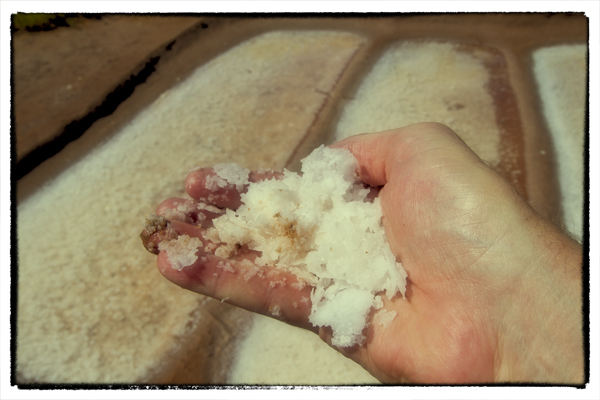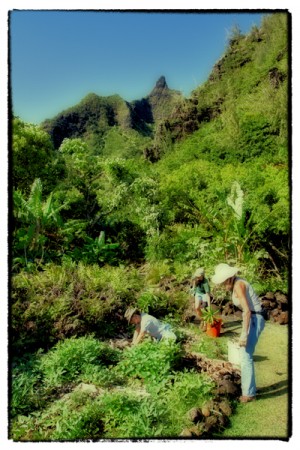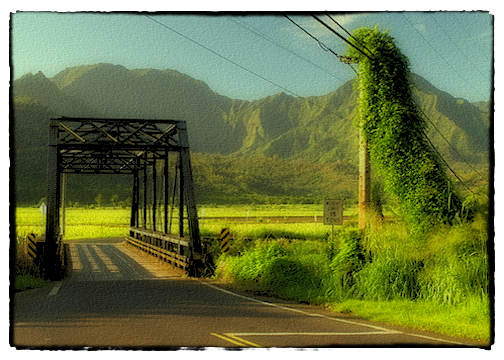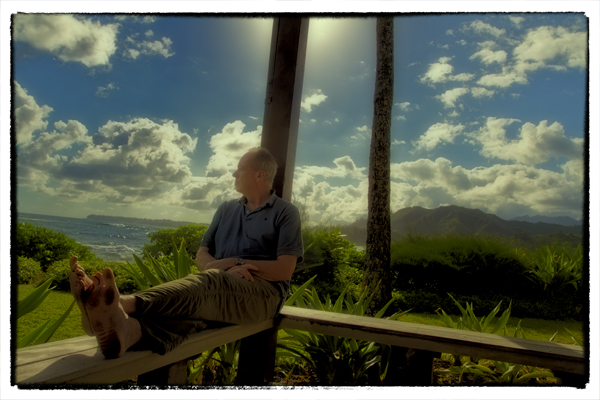Two years ago when I was on Kauai I spent an afternoon at the salt ponds near Hanapepe and got lucky when I met a family that was working their pond, which had been handed down from generation to generation, who was generous enough to offer me a bag of just-harvested sea salt which I took home with me. Well, that bag of salt is long gone so one of the things I wanted to do last weekend was go back to the salt ponds and see if I could get lucky again.
At the salt ponds, the ocean water passes through salt water aquifers that feed wells called punawai. From here the water is either pumped or, using buckets, carried into ponds that are like shallow bath tubs, called wai ku (literally “water standing”) shaped by hand into the red clay soil. For several weeks the water is allowed to evaporate until a slushy layer of crunchy salt crystals form. This is then slowly raked into big mounts before being collected in 5-gallon buckets.
But the most interesting thing about all this is that this isn’t a commercial operation. In fact, it’s illegal to sell Kauai’s sea salt because Hawaiians have always considered it a gift from the sea (that said, it can be bartered). The other cool thing is that only a handful of locals—families who have been farming the sea salt for many generations—are allowed to work the salt ponds. In short, this is kind of like a sacred area (after the salt has dried, a small percentage of it is mixed with red volcanic soil, usually from secret valleys inland, and that red salt, called alaea, is considered sacred and is used for healing remedies that call for purification ceremonies. The alaea Hawaiian red sea salt you pay a fortune for at your local gourmet store is a commercial product that has nothing to do with the actual harvesting of Hawaiian sea salt).
The salt ponds, which are adjacent to Salt Pond Park, one of the best snorkeling beaches on the island, are marked off by green wind fences but that doesn’t keep tourists from just wandering in and sticking their hands or feet in the ponds which, as you can imagine, sort of drives the Hawaiian saltmakers crazy. It’s like having a vegetable garden where people come in off the street to squeeze your tomatoes.
Anyway, when I got to the salt ponds there was only one family out there raking the salt. Which didn’t really surprise me since the salt is generally only harvested during the summer months when the intense sun quickly evaporates the water in the ponds. I explained to a young guy out there working with his auntie that I’d been here two years ago and “Dwight” had given me a bag of salt to take home and how I’d really cherished that salt but unfortunately it was now all gone.
“Oh, you know Dwight?”
“Yeah. He’s the guy that gave me the salt.”
“You want some more?”
“Man, I would love that.”
And so the guy gave me a small bag of salt. True aloha spirit.






Recent Comments